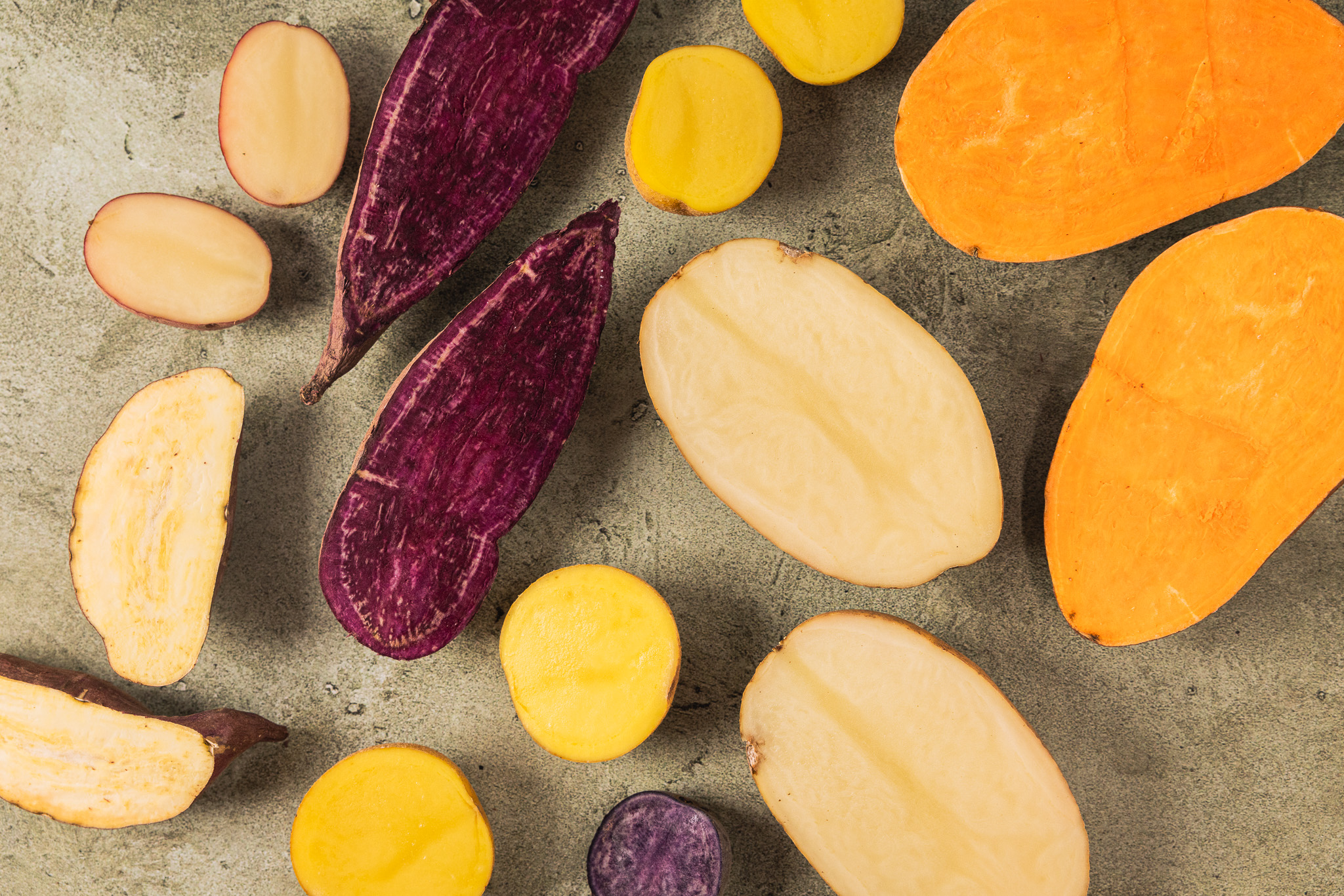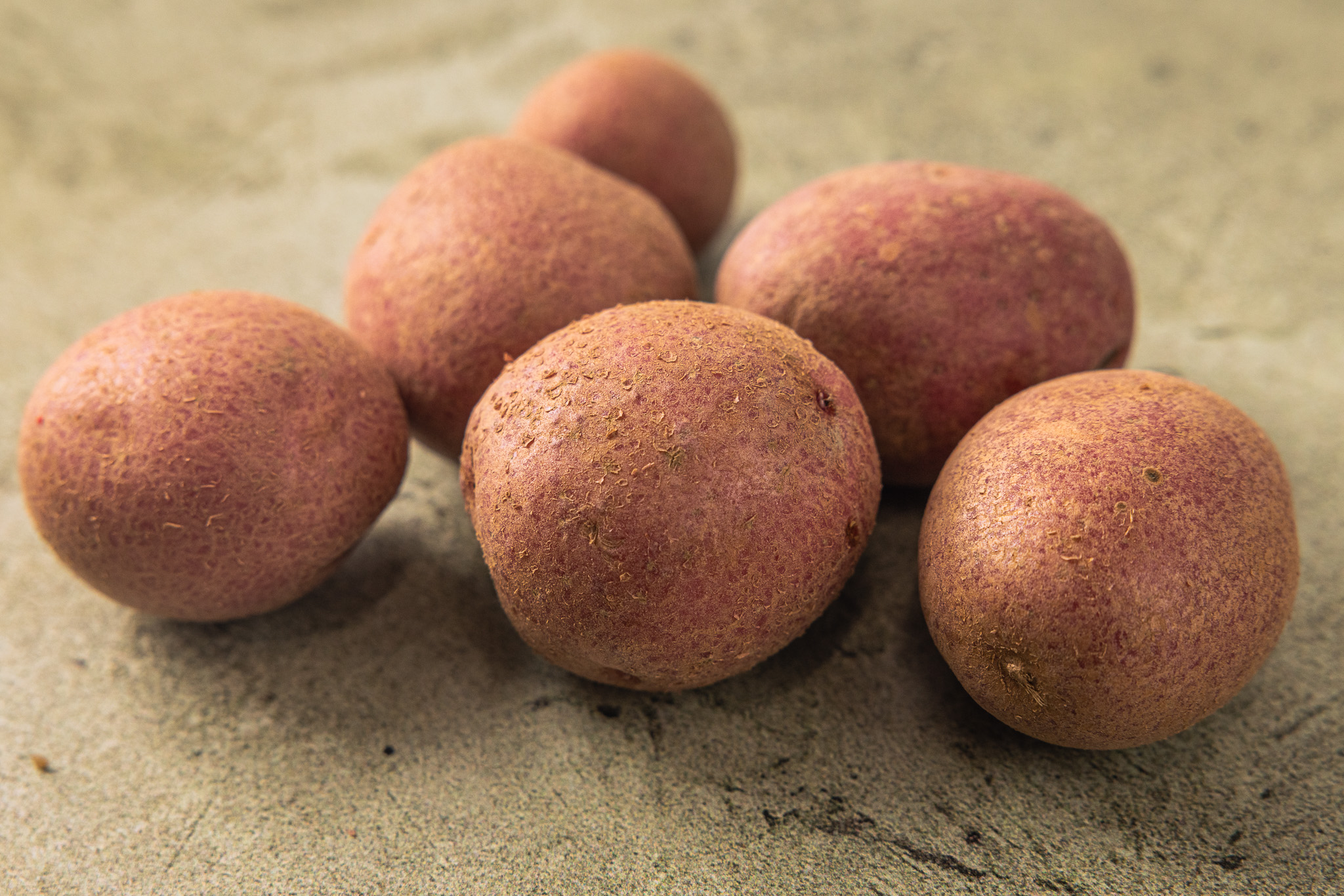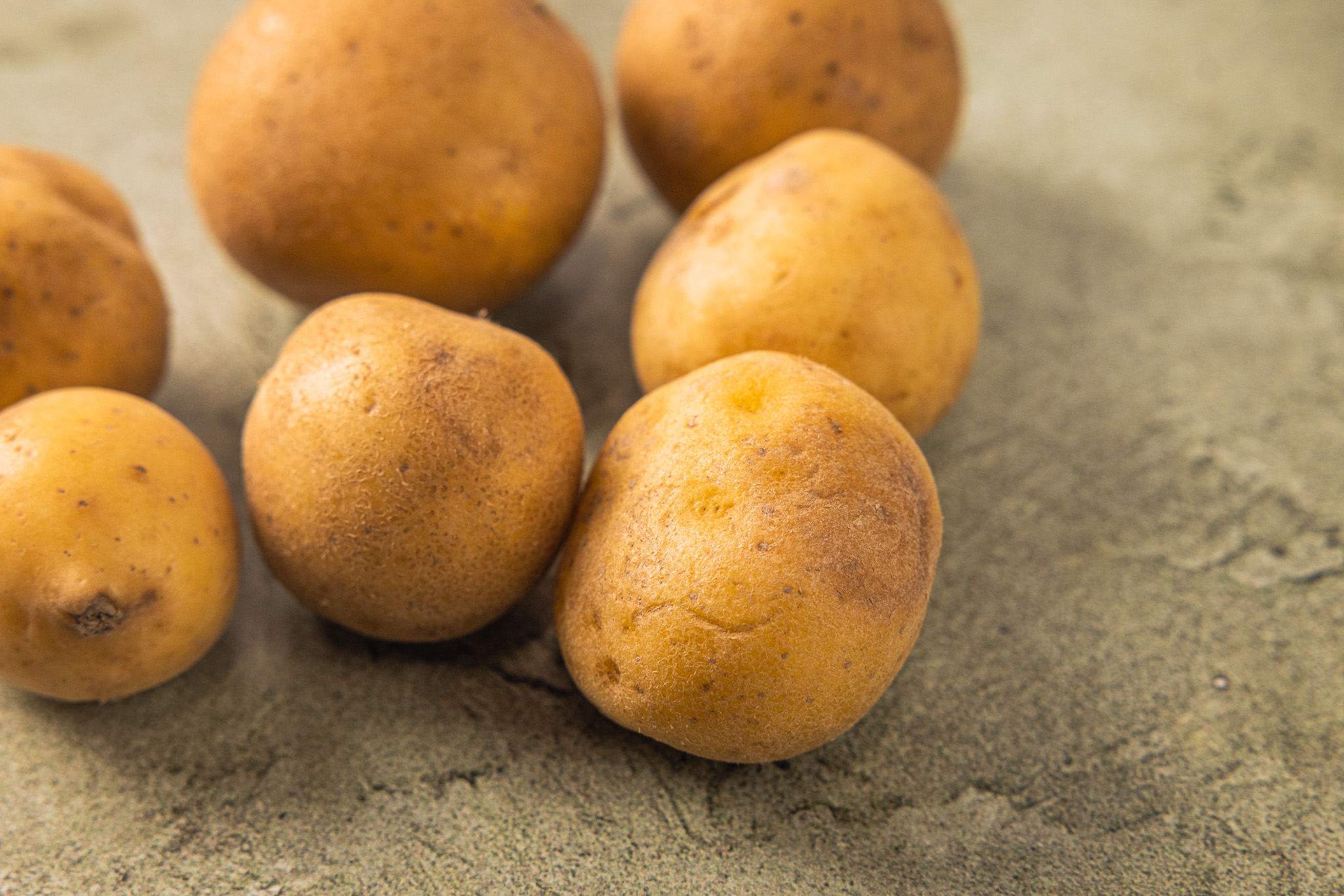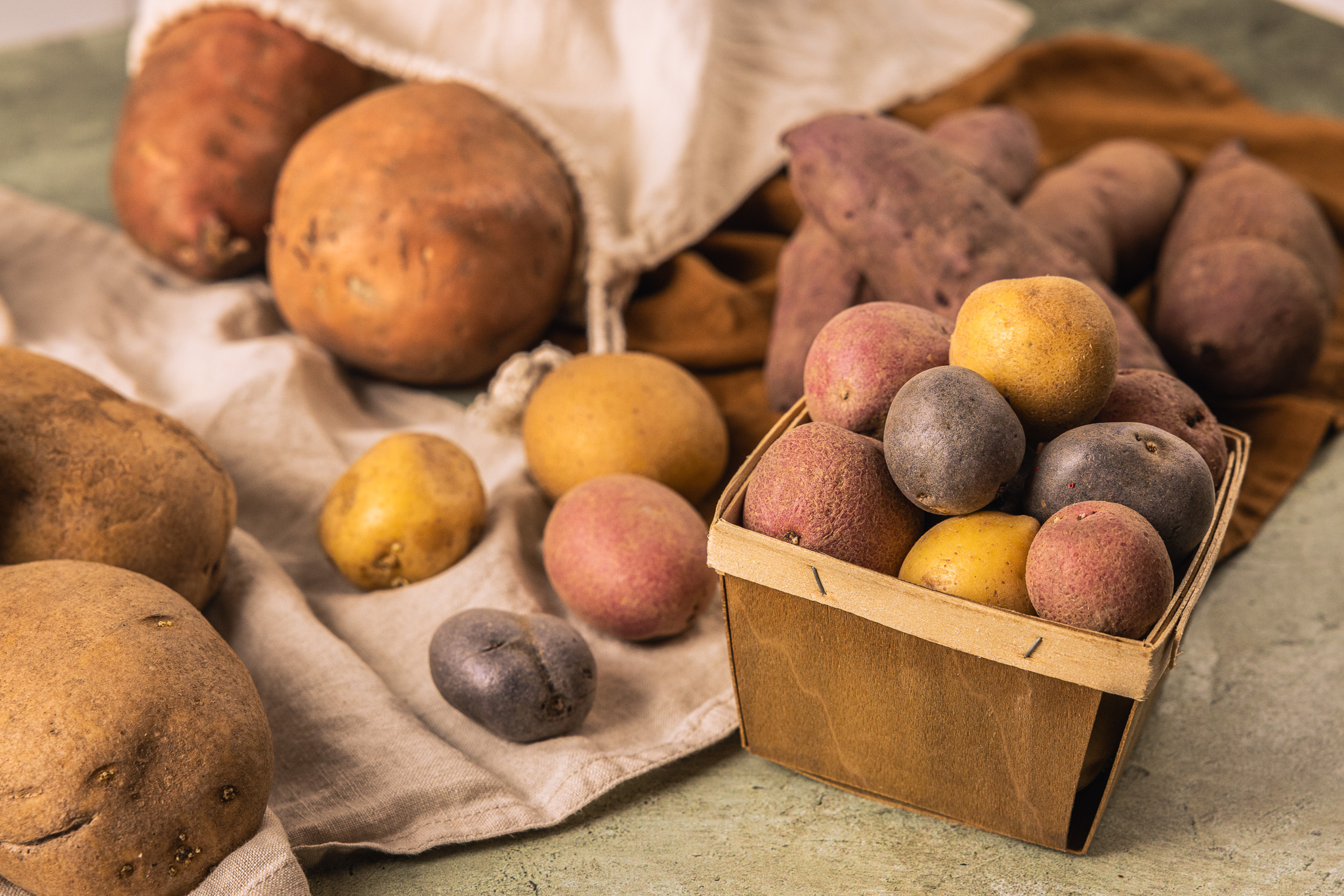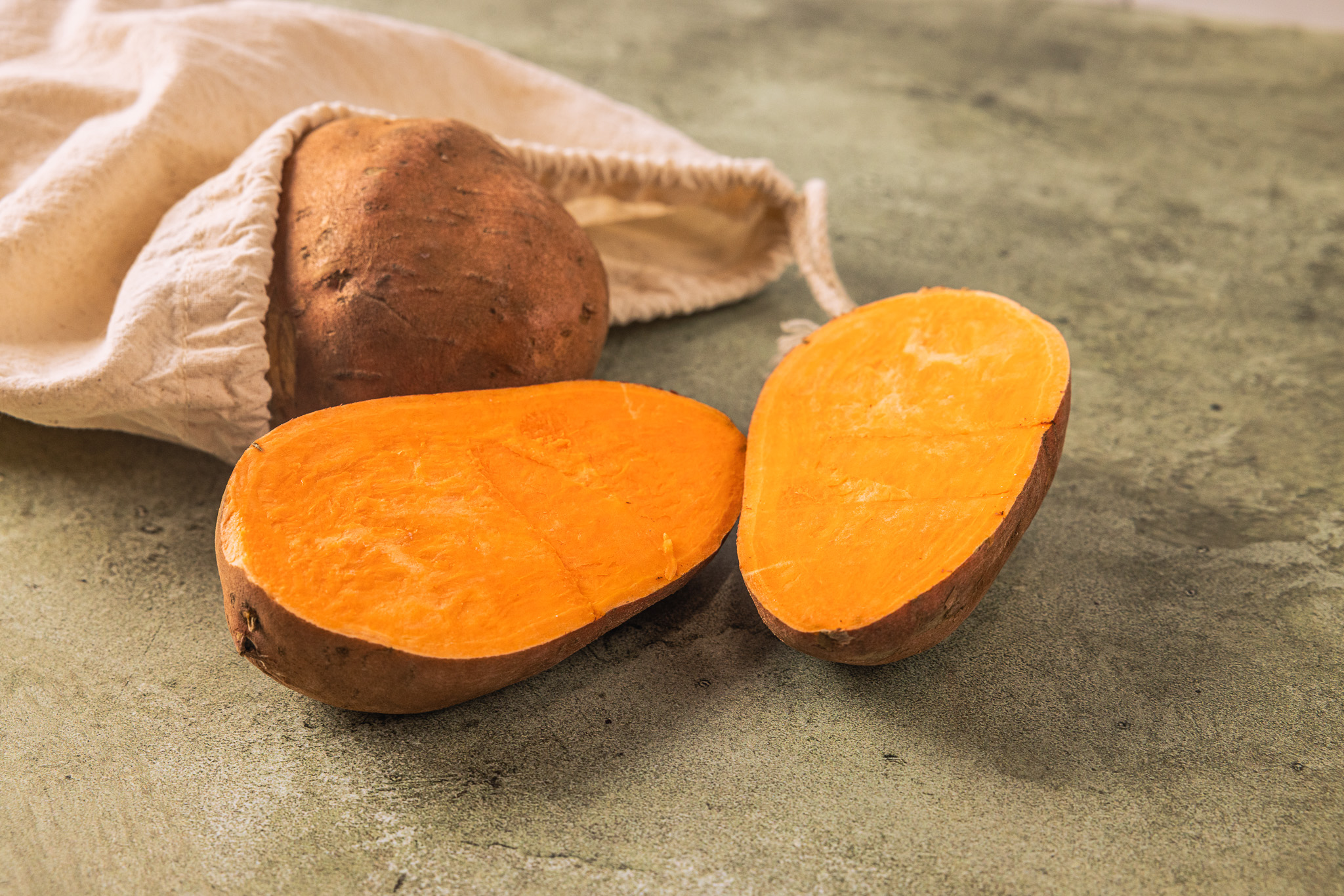 Potatoes 101: Your Guide to the Best Side
Potatoes 101: Your Guide to the Best Side
Boiled, baked, fried, roasted, mashed – is there anything a potato can’t do? As a staple enjoyed across the world, this humble vegetable comes in a wide variety of options in every supermarket. And, thanks to a wide array of textures and starch levels, not every potato is created equal.
Before we break down the basic varieties found on the store shelf, let’s talk about this vegetable’s roots. While the potato is now a part of virtually every cuisine in the world, it was cultivated in North America relatively recently. Native to the mountains of South America, Spanish explorers encountered this versatile vegetable in the 16th century and brought it back to Europe. Potatoes rose in popularity in America in the 1800s with the arrival of Irish immigrants.
Along with its many uses, the potato has spread around the globe due to its ability to flourish in nearly every climate with a high crop yield. There are more than 4,000 known varieties of potatoes, most of which grow wild only in the mountains of South America.
Basic Nutrition
Potatoes are part of the nightshade family, which includes tomatoes, peppers, and eggplants. A perfect vessel for butter, cream, or cheese, potatoes are often considered a comfort food. But this vegetable packs a surprising roster of nutritional benefits – including high levels of potassium and vitamin C, as well as B6, zinc, and iron.
While french fries aren’t exactly the healthiest choice, there are many ways to enjoy potatoes on their own or incorporated into a dish. Aside from taste and appearance, most potato varieties are distinguished by their starch content – high, medium, or low. Starchy potatoes will break down and act as a binder, while low-starch potatoes will hold their structure. Choosing the best potato will depend on how you want to use it in the dish.
If you're ready for a taste explosion, try this recipe for Three Potato Hasselback Gratin with three types of potatoes (russet, yukon gold, and sweet potatoes).
Russet Potatoes
The classic American potato, also known as the Idaho potato, is one of the most common options found in the store, and often the choice for baked potatoes. With high starch content, it has rough brown skin and a mild flavor. The texture is soft and a bit grainy, like flour, and creates a lightness in dishes. The starch in a russet will break down quickly and act as a thickening agent. As the most popular mashing potato, russets should be cooked and mashed quickly to prevent over-thickening (or breaking down the starches too far).
Best Uses: fried, baked, roasted, mashed
Yukon Gold Potatoes
This hybrid potato was cultivated by crossing an American White with a wild South American yellow potato. As a result, it achieves the perfect balance between a russet and a red potato – just enough, but not too much starch. Classified as a low- to medium-starch potato, it has a rich and creamy interior and holds its structure well for dishes, like soups. It’s a true all-purpose potato, and one of our favorite potatoes for a good reason!
Best Uses: roasted, mashed, baked, boiled
White Potatoes
White potatoes include both long white or round white varieties and contain low to medium starch. The skin is thin on both varieties, but a round white potato will be slightly waxier – retaining more structure once cooked. White potatoes don’t brown well, but have many other uses and make a great addition to salads.
Best Uses: boiled, baked, mashed
Red Potatoes
As a low-starch, waxy potato, red potatoes will hold structure well once cooked, and make an ideal addition to stews and potato salad. The red skin is fairly thin and the interior is creamy, making it a wonderfully simple side to any meal – butter, flaky salt, and a sprinkle of herbs, and it adds a classy bite with very little work. These potatoes also do well in slow and low cooks, like a clam bake.
Best Uses: roasted, boiled, fried
New Potatoes
New potatoes are not a variety but simply a distinction of harvesting time. Picked while the plant is young and still green, new potatoes are delicate and small, with a thin skin and sweet flesh. Often colorful and visually stunning, we like to use new potatoes in salads and casseroles with the skin on.
Best Uses: roasted, boiled
Fingerling Potatoes
Similar to new potatoes, fingerling potatoes include a collection of low-starch varieties. The most petite potatoes, the thin skin is ideal for dishes with a low cooking time. We like to reserve fingerling potatoes for salads or as an elegant side to a classic meat dish.
Best Uses: roasted, boiled
Purple and Blue Potatoes
Purple and blue potatoes are heirloom varieties and offer a high-antioxidant value, as noted by this potato’s vibrant hue. Both varieties have a medium starch level and can be enjoyed in a variety of dishes, offering enough starch to aid in thickening.
Best Uses: roasted, mashed, baked
Sweet Potatoes
While they may share the same last name, sweet potatoes are quite different and are an entirely different category botanically. Sweet potatoes are low in starch and are not used to thicken dishes, but they are highly versatile, crossing the savory realm into sweets and desserts. As flavorful as they are colorful, sweet potatoes also make a great addition to soups and stews. And, with an abundance of antioxidants and fiber, what’s not to like about the sweet potato?
Best Uses: roasted, mashed, baked, boiled
Let's put those tots to good use with our new Three Potato Hasselback Gratin
